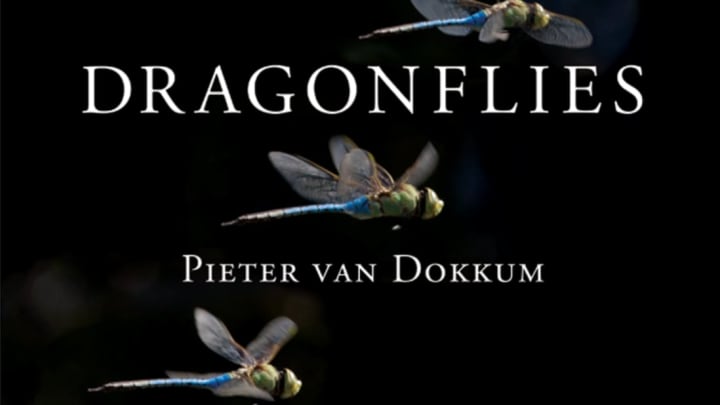Photographer and astronomer Pieter van Dokkum had been attracted to dragonflies for several years, but it wasn't until he stumbled across a quaint pond in New England, dotted with hundreds of dragonflies, that van Dokkum decided to make a book. The photographer waded in the pond, spent nights waiting for the right shot, and even lost a few shoes. The result is the delightful Dragonflies: Magnificent Creatures of Water, Air, and Land, which showcases and celebrates the insects' inherent beauty.
The book starts with the tiny beginnings of the dragonfly, with the transformation of the nymphs. These flightless newborns go through a transformation (similar to caterpillars) that takes an entire night to complete. Van Dokkum then follows the full life of dragonflies, up until the end of dragonfly season in fall. About a third of the pictures come from that New England pond, while the others come from different parts of America and the Netherlands.
Van Dokkum compares the dragonflies to fairies, and it’s not hard to see why. The delicate creatures exhibit amazing colors and beauty that almost seems otherworldly. Here are some select images from Dragonflies.

© Pieter Van Dokkum
"Stained glass wing. The Wings have a complex, rigid surface that is maintained by a network of veins. The subtle colors of this immature Black Meadowhawk are caused by sunlight reflecting off the still not quite transparent wings."

© Pieter Van Dokkum
"Thermoregulation. Dragonflies regulate their body temperature by angling their bodies to maximize or minimize the area exposed to the sun. When temperatures are high around midday, perching dragonflies such as this Halloween Pennant may point their abdomen straight up, to absorb as little heat as possible ('obelisking')."

© Pieter Van Dokkum
"Calico Pennant, female."

© Pieter Van Dokkum
"Hide and Seek. Damselflies are light sleepers—insofar as insects sleep at all. Even when they are cold and covered in dew, they tend to move away from whatever is approaching them and hide behind the plant they are clinging to. A curious eyeball may be the only part of the damselfly that is visible to predators—and cameras!"

© Pieter Van Dokkum
"Common Green Darner. This large dragonfly is perhaps the most iconic of American species. They spend a lot of time on the wing, patrolling over ponds and hunting above meadows. Some populations of Common Green Darners are migratory, flying from the southern to the northern United States and Canada in the spring, with their offspring returning south in the autumn."

© Pieter Van Dokkum
"Flame Skimmer, male"

© Pieter Van Dokkum
"Flame Skimmer, male."

© Pieter Van Dokkum
"Female Seaside Dragonlet. Dragonflies typically require fresh water to reproduce. The Seaside Dragonlet is the only American dragonfly that breeds in salt water. It does not venture far from the coast, and may be found in salt marshes and tidal flats."

© Pieter Van Dokkum
"Variable Darner, eating a butterfly."

© Pieter Van Dokkum
"Damselfly nursery. Some plants are very popular with egg-laying damselflies."
For more pictures, purchase the book here.
